#abbot bernard
Photo
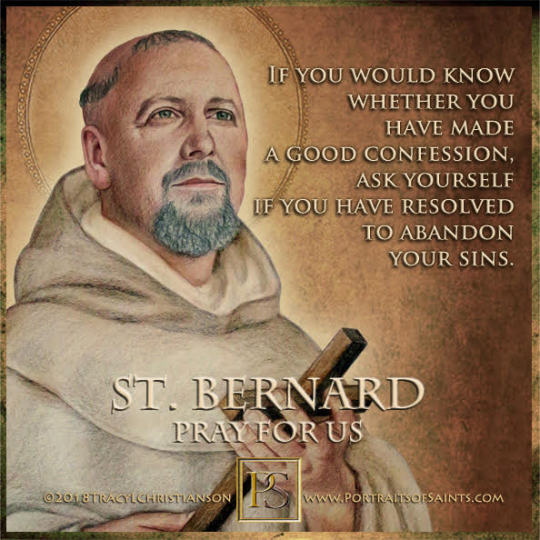
Happy Feast Day
Saint Bernard of Clairvaux
Abbot and Doctor of the Church
1090 - 1153
Feast day: August 20
Patronage: Cistercians, beekeepers, candlemakers
Born near Dijon in France in 1090, Bernard entered the Cistercian Order at the age of 22; he became the Abbot of Clairvaux. Despite his longing for the solitary contemplative life, he traveled a great deal in France, Germany, and Italy, trying to reconcile the divisions in the Church at the time. He wrote many works on the spiritual life and theology.
{website}
68 notes
·
View notes
Text
you guys don’t understand how much i wish i could be a homosexual monk getting up early every day for prime hoping that they assign me to work on the parchment today but the skins are still soaking and aren’t ready to be stretched so instead i’m assigned to the scriptorium even though my minuscules are misaligned every time but today the prior says i can work on the illuminations on brother anselm’s legenda aurea since his horae made for the clothier last year was terrible so all through terce i’m thinking about how to properly position st. agatha so as not to be disrespectful or base but by the time sext rolls around i’ve only had time to clean up anselms illuminations up to the beheading of st. paul and after none it’s back to the scriptorium and this time the roundsman brother bernard sticks his head in partway through since brother peter will slack off nearing vespers if no one’s checking on him and brother bernard makes a show of looking at everyone’s work so it doesn’t seem like he’s singling out peter and at this point i would be working on fixing anselm’s shaky line work on the spear piercing st. matthew and as bernard leans over my desk the knots of his cincture nearly knock over my ink but either way he looks approvingly (as if he has any say, since even if he’s the roundsman i have seniority and know the abbot much better) and after compline when we’re all settling in for sleep before matins & lauds i wonder if he’ll be a stickler on chapter 55 of our dear st. benedict’s rule before looking to see if the chamberlain was going to shave us today since poor old brother albrecht was looking a little ragged but he’s not here so i tuck in to sleep… and in a few days when it’s time to stretch the skins brother bernard comes out to the yard where i’m setting up the frames and he tries to help me but makes a fool of himself in front of me and the cantor but asks me to meet him in the misericord after vespers anyways and of course i think i’m in trouble because the roundsman is asking me to the misericord but when the time comes he just wants help with his letters before lent and this time it’s my cincture brushing against his almost black linens and my hand under his hood on his back as i have him read aloud to me from the vulgata christs prayer to his father in gethsemane while his men slept soundly even as judas was woken by the centurions and longinus readied his spear… i need that life so bad
209 notes
·
View notes
Text
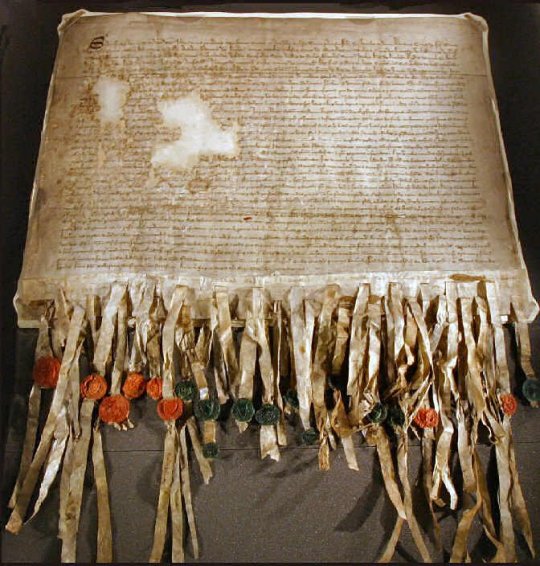
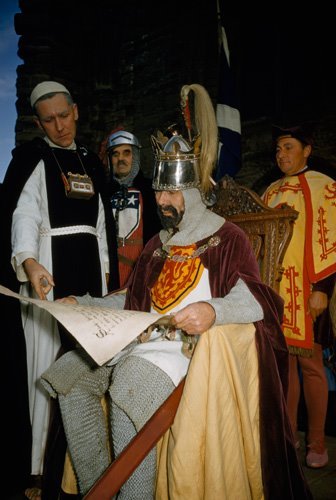

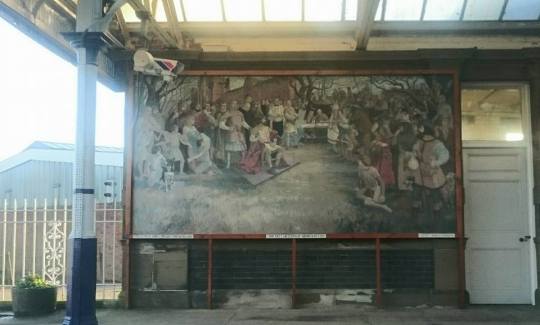
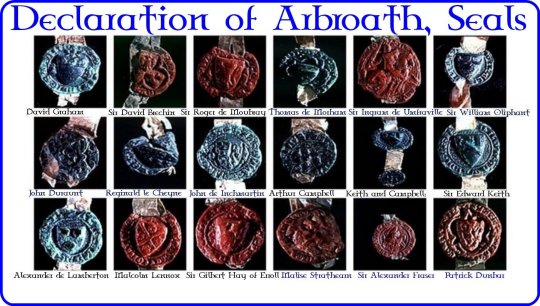
On April 6th 1320, the Declaration of Arbroath was drawn up by the monks of Arbroath Abbey.
Fifty-one Scottish magnates and nobles issued a declaration of Scottish independence in the form of a letter to Pope John XXII. This effort was designed to establish Scotland as an independent kingdom no longer under English rule.
The Declaration of Arbroath is without doubt the most famous document in Scottish history. Like the American Declaration of Independence, which is partially based on it, it is seen by many as the founding document of the Scottish nation.
It was most likely drafted in the scriptorium of Arbroath Abbey by Abbot Bernard on behalf of the nobles and barons of Scotland. It was one of three letters sent to the Pope in Avignon, the other two being from King Robert Bruce himself and from four Scottish bishops, attempting to abate papal hostility. The document received the seals of several Scottish barons and it then was taken to the papal court at Avignon in France by Sir Adam Gordon.
There is considerable debate over the Declaration’s significance. For some it is simply a diplomatic document; while others see it as a radical movement in western constitutional thought.
It could be viewed as a cunning diplomatic ploy by the Scottish barons to explain and justify why they were still fighting their neighbours when all Christian princes were supposed to be united in crusade against the Muslims. All this, just at the point when they were about to retake Berwick: Scotland’s most prosperous medieval town. As an explanation, it failed to convince the pope to lift his sentence of excommunication on Scotland.
Others analyse what the Declaration of Arbroath actually says. The Scots clergy had produced not only one of the most eloquent expressions of nationhood, but the first expression of the idea of a contractual monarchy. Here is the critical passage in question:
‘Yet if he (Bruce) should give up what he has begun, and agree to make us or our kingdom subject to the King of England or the English, we should exert ourselves at once to drive him out as our enemy and a subverter of his own rights and ours, and make some other man who was well able to defend us our King; for, as long as but a hundred of us remain alive, never will we on any conditions be brought under English rule. It is in truth not for glory, nor riches, nor honours that we are fighting, but for freedom - for that alone, which no honest man gives up but with life itself.’
The threat to drive Bruce out if he ever sold Scotland to English rule was a fantastic bluff. There was nobody else to take his place. The point is that the nobles and clergy are not basing their argument to the pope on the traditional notion of the Divine Rights of Kings. Bruce is King first and foremost because the nation chose him, not God, and the nation would just as easily choose another if they were betrayed by the King. The explanation also neatly covers the fact that Bruce had usurped John Balliol’s rightful kingship in the first place.
In spite of all possible motivations for its creation, the Declaration of Arbroath, under the extraordinary circumstances of the Wars of Independence, was a prototype of contractual kingship in Europe.
The pics are the document itself, a re-enactment of the signing from 1957, the statue in Arbroath, a mural at Arbroath train station and a pic I collated of the seals on the document.
27 notes
·
View notes
Text
“Archaeologists are still discovering the extent of monastic skills and technological cleverness. In the late 1990s, University of Bradford archeometallurgist Gerry McDonnell found evidence near Rievaulx Abbey in North Yorkshire, England, of a degree of technological sophistication that pointed ahead to the great machines of the eighteenth-century Industrial Revolution. Rievaulx Abbey was one of the monasteries that King Henry VIlI ordered closed in the 1530s as part of his confiscation of Church properties.) In exploring the debris of Rievaulx and Laskill (an outstation about four miles from the monastery), McDonnell found that the monks had built a furnace to extract iron from ore.
…
McDonnell believes that the monks were on the verge of building dedicated furnaces for the large-scale production of cast iron-perhaps the key ingredient that ushered in the industrial age -and that the furnace at Laskill had been a prototype of such a furnace. "One of the key things is that the Cistercians had a regular meeting of abbots every year and they had the means of sharing technological advances across Europe," he said. "The break-up of the monasteries broke up this network of technology transfer." The monks "had the potential to move to blast furnaces that produced nothing but cast iron. They were poised to do it on a large scale, but by breaking up the virtual monopoly, Henry VIII effectively broke up that potential.1”
- Thomas E. Woods Jr., Ph.D., “How the Monks Saved Civilization,” How the Catholic Church Built Western Civilization
—
1. Charles Montalembert, The Monks of the West: From Saint Benedict to Saint Bernard, vol. 5 (London: Nimmo, 1896), 227.
17 notes
·
View notes
Text

St Bernard
Bernard of Clairvaux, O. Cist., venerated as Saint Bernard, was an abbot, mystic, co-founder of the Knights Templar, and a major leader in the reformation of the Benedictine Order through the nascent Cistercian Order.
17 notes
·
View notes
Text
SAINT OF THE DAY (April 17)

St. Stephen Harding is regarded as the founder of the Cistercian monasteries.
He was also an accomplished scribe. One of his greatest achievements is considered to be the Harding Bible.
Stephen was born around 1060 in Dorset, England. He was educated at Sherborne Abbey.
After studying in Paris and Rome, he visited the monastery of Molesme.
Impressed by its holy abbot, Robert of Molesme, and the prior, Alberic (both of which were later canonized), Stephen joined the community.
After a few years, the three men, along with 20 other monks, established a more austere monastery in Citeaux.
Eventually, Robert was called back to his position of abbot at Molesme in 1099.
Alberic, who became the new abbot of Citeaux, died in 1110. Following his death, Stephen was elected as abbot.
Stephen drew up the famous "Charter of Charity," which became the basis for Cistercian monasticism.
Only a few men were joining the community, and the monastery was suffering from hunger and sickness.
It seemed that their new order was destined to die out.
However, in 1112, the man who was to be known as St. Bernard of Clairvaux, joined the community along with 30 other companions, including almost his entire family.
In 1125, he established the first community of Cistercian nuns in Tart.
In 1133, he resigned as abbot because of poor eyesight. Before his death on 28 March 1134, he had established 13 monasteries.
By the end of the 12th century, there were 500 in Europe.
3 notes
·
View notes
Text

Saint Bernard preaching the Second Crusade before King Louis VII, his queen Eleanor of Aquitaine, and Abbot Suger, at Vézelay in Burgundy, 31 March, 1146
by Émile Signol
James Meeker Ludlow describes the scene romantically in his book The Age of the Crusades:
A large platform was erected on a hill outside the city. King and monk stood together, representing the combined will of earth and heaven. The enthusiasm of the assembly of Clermont in 1095, when Peter the Hermit and Urban II launched the first crusade, was matched by the holy fervor inspired by Bernard as he cried, "O ye who listen to me! Hasten to appease the anger of heaven, but no longer implore its goodness by vain complaints. Clothe yourselves in sackcloth, but also cover yourselves with your impenetrable bucklers. The din of arms, the danger, the labors, the fatigues of war, are the penances that God now imposes upon you. Hasten then to expiate your sins by victories over the Infidels, and let the deliverance of the holy places be the reward of your repentance." As in the olden scene, the cry "Deus vult! Deus vult! " rolled over the fields, and was echoed by the voice of the orator: "Cursed be he who does not stain his sword with blood."
#second crusade#medieval#bernard of clairvaux#st bernard#saint bernard#knights#vézelay#burgundy#france#french#art#émile signol#history#christianity#christian#europe#european#middle ages#knights templars#crusades#crusaders#crusade#king of france#eleanor of aquitaine#king louis vii
58 notes
·
View notes
Text

The screenplay of the film Joachim and the Apocalypse triumphs in England
The film draws inspiration from the apocalypse described by Calabrian biblical exegete Joachim of Fiore, who lived in the Middle Ages. Produced by Delta Star Pictures, it won the Best Historical Screenplay award at The Best Script Award ceremony that took place in London last week.

Out of more than 450 competing scripts for the 2024 edition, the script for the film "Joachim and the Apocalypse", produced by Delta Star Pictures won the Best Historical Screenplay award. In addition to the work of writer Michela Albanese and director Jordan River, historical scholars Valeria De Fraja and renowned philosopher Andrea Tagliapietra contributed as historical consultants.

The project also received valuable support from numerous renowned figures and cultural organizations. Supported by the Ministry of Culture, the Calabria Film Commission Foundation, and various other institutions, the film draws inspiration from the apocalypse described by Calabrian biblical exegete Joachim of Fiore, who lived in the Middle Ages.
The film was also shot in various areas of Calabria.

Joachim of Fiore, (c. 1135 – 30 March 1202), was a Christian theologian, Catholic abbot, and the founder of the monastic order of San Giovanni in Fiore. According to theologian Bernard McGinn, "Joachim of Fiore is the most important apocalyptic thinker of the whole medieval period."
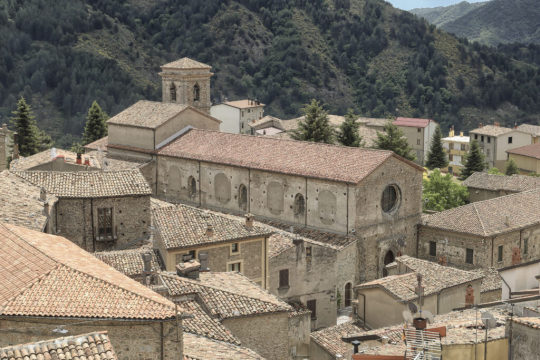
Set in the 1200s, the narrative unfolds on multiple levels: a historical one, based on real events, and a fantasy one, derived from metaphysical states such as the dream dimension, as well as ecstasy and the journey through the three realms of Dante's imaginary, namely Inferno, Purgatory, and Paradise.
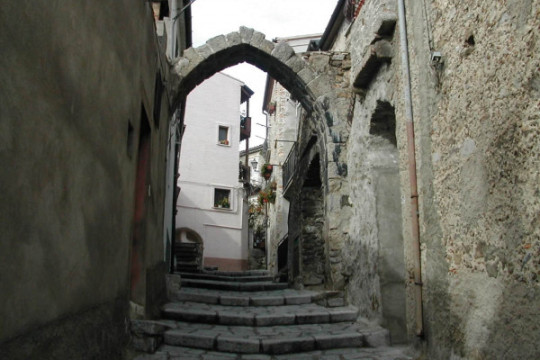
It tells the story of a monk who transformed some of his visions into images (figurae) and symbols, encapsulating them in the Liber Figurarum.
This ancient medieval illuminated manuscript has survived over 800 years up to the present day, with one of the three existing copies currently preserved in England, at Oxford.
The international release of the film is scheduled around the end of 2024 and the turn of the upcoming jubilee year.
Follow us on Instagram, @calabria_mediterranea
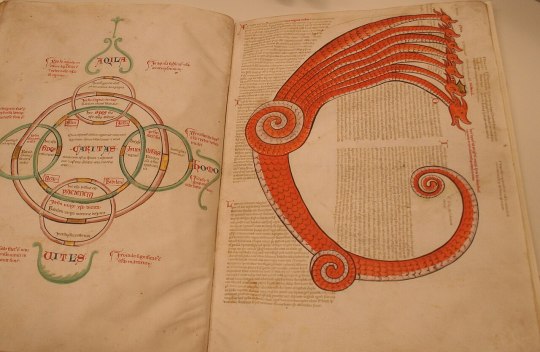
#joachim of fiore#joachim#cinema#calabria#san giovanni in fiore#south italy#southern italy#history#architecture#religion#abbey#monk#2024#mediterranean#actor#actors#fabrizio turbanti#coming soon#apocalypse#13th century#medieval#middle ages#philosophy#theology#christian#catholic#catholicism#catholic imagery#gioacchino da fiore
4 notes
·
View notes
Text
Saint of the Day – 30 December – Saint Raoul of Vaucelles O.Cist. (Died 1152)
Saint of the Day – 30 December – Saint Raoul of Vaucelles O.Cist. (Died 1152) Cistercian Priest, Abbot and Founder of Vaucelles Abbey under the instruction of St Bernard (1090-1153) the Doctor of Clairvaux. Born in Sussex, England and died in 1152 of natural causes at the Monastery which he had founded in France. Also known as – Radulphe, Ralph, Raul. There are sadly no available images of our…

View On WordPress
2 notes
·
View notes
Text
Some Advent prayers
12 notes
·
View notes
Text
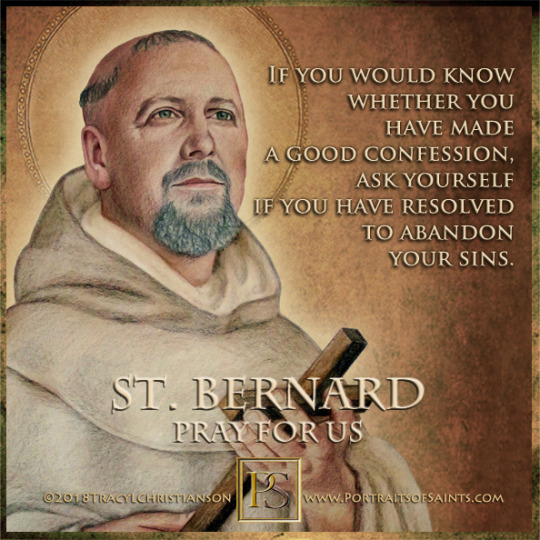
Saint Bernard of Clairvaux
Abbot and Doctor of the Church
1090 - 1153
Feast day: August 20
Patronage: Cistercians, beekeepers, candlemakers
Born near Dijon in France in 1090, Bernard entered the Cistercian Order at the age of 22; he became the Abbot of Clairvaux. Despite his longing for the solitary contemplative life, he traveled a great deal in France, Germany, and Italy, trying to reconcile the divisions in the Church at the time. He wrote many works on the spiritual life and theology.
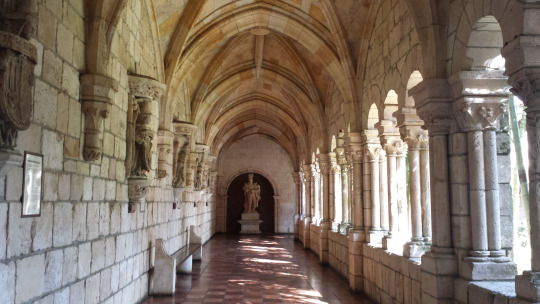
Prints, plaques & holy cards available for purchase here: (website)
39 notes
·
View notes
Text
Today the Church honors St. Bernard of Clairvaux, Monk, Theologian, Doctor of the Church.
Ora pro nobis.
St. Bernard de Clairvaux, (born 1090 AD, probably Fontaine-les-Dijon, near Dijon, Burgundy [France]—died August 20, 1153 AD, Clairvaux, Champagne; canonized January 18, 1174; feast day August 20), was a Cistercian monk and mystic, the founder and abbot of the abbey of Clairvaux, and one of the most influential churchmen of his time.
Born of Burgundian landowning aristocracy, Bernard grew up in a family of five brothers and one sister. The familial atmosphere engendered in him a deep respect for mercy, justice, and loyal affection for others. Faith and morals were taken seriously, but without priggishness. Both his parents were exceptional models of virtue. It is said that his mother, Aleth, exerted a virtuous influence upon Bernard only second to what Monica had done for Augustine of Hippo in the 5th century. Her death, in 1107, so affected Bernard that he claimed that this is when his “long path to complete conversion” began.
He turned away from his literary education, begun at the school at Châtillon-sur-Seine, and from ecclesiastical advancement, toward a life of renunciation and solitude. Bernard sought the counsel of the abbot of Cîteaux, Stephen Harding, and decided to enter this struggling, small, new community that had been established by Robert of Molesmes in 1098 as an effort to restore Benedictinism to a more primitive and austere pattern of life. Bernard took his time in terminating his domestic affairs and in persuading his brothers and some 25 companions to join him. He entered the Cîteaux community in 1112, and from then until 1115 he cultivated his spiritual and theological studies.
Bernard’s struggles with the flesh during this period may account for his early and rather consistent penchant for physical austerities. He was plagued most of his life by impaired health, which took the form of anemia, migraine, gastritis, hypertension, and an atrophied sense of taste.
Founder And Abbot Of Clairvaux
In 1115 Stephen Harding appointed him to lead a small group of monks to establish a monastery at Clairvaux, on the borders of Burgundy and Champagne. Four brothers, an uncle, two cousins, an architect, and two seasoned monks under the leadership of Bernard endured extreme deprivations for well over a decade before Clairvaux was self-sufficient. Meanwhile, as Bernard’s health worsened, his spirituality deepened. Under pressure from his ecclesiastical superiors and his friends, notably the bishop and scholar William of Champeaux, he retired to a hut near the monastery and to the discipline of a quack physician. It was here that his first writings evolved. They are characterized by repetition of references to the Church Fathers and by the use of analogues, etymologies, alliterations, and biblical symbols, and they are imbued with resonance and poetic genius. It was here, also, that he produced a small but complete treatise on Mariology (study of doctrines and dogmas concerning the Virgin Mary), “Praises of the Virgin Mother.” Bernard was to become a major champion of a moderate cult of the Virgin, though he did not support the notion of Mary’s immaculate conception.
By 1119 the Cistercians had a charter approved by Pope Calixtus II for nine abbeys under the primacy of the abbot of Cîteaux. Bernard struggled and learned to live with the inevitable tension created by his desire to serve others in charity through obedience and his desire to cultivate his inner life by remaining in his monastic enclosure. His more than 300 letters and sermons manifest his quest to combine a mystical life of absorption in God with his friendship for those in misery and his concern for the faithful execution of responsibilities as a guardian of the life of the church.
It was a time when Bernard was experiencing what he apprehended as the divine in a mystical and intuitive manner. He could claim a form of higher knowledge that is the complement and fruition of faith and that reaches completion in prayer and contemplation. He could also commune with nature and say:
“Believe me, for I know, you will find something far greater in the woods than in books. Stones and trees will teach you that which you cannot learn from the masters.”
After writing a eulogy for the new military order of the Knights Templar he would write about the fundamentals of the Christian’s spiritual life, namely, the contemplation and imitation of Christ, which he expressed in his sermons “The Steps of Humility” and “The Love of God.”
Pillar Of The Church
The mature and most active phase of Bernard’s career occurred between 1130 and 1145. In these years both Clairvaux and Rome, the centre of gravity of medieval Christendom, focussed upon Bernard. Mediator and counsellor for several civil and ecclesiastical councils and for theological debates during seven years of papal disunity, he nevertheless found time to produce an extensive number of sermons on the Song of Solomon. As the confidant of five popes, he considered it his role to assist in healing the church of wounds inflicted by the antipopes (those elected pope contrary to prevailing clerical procedures), to oppose the rationalistic influence of the greatest and most popular dialectician of the age, Peter Abelard, and to cultivate the friendship of the greatest churchmen of the time. He could also rebuke a pope, as he did in his letter to Innocent II:
“There is but one opinion among all the faithful shepherds among us, namely, that justice is vanishing in the Church, that the power of the keys is gone, that episcopal authority is altogether turning rotten while not a bishop is able to avenge the wrongs done to God, nor is allowed to punish any misdeeds whatever, not even in his own diocese (parochia). And the cause of this they put down to you and the Roman Court.”
Bernard’s confrontations with Abelard ended in inevitable opposition because of their significant differences of temperament and attitudes. In contrast with the tradition of “silent opposition” by those of the school of monastic spirituality, Bernard vigorously denounced dialectical Scholasticism as degrading God’s mysteries, as one technique among others, though tending to exalt itself above the alleged limits of faith. One seeks God by learning to live in a school of charity and not through “scandalous curiosity,” he held. “We search in a worthier manner, we discover with greater facility through prayer than through disputation.” Possession of love is the first condition of the knowledge of God. However, Bernard finally claimed a victory over Abelard, not because of skill or cogency in argument but because of his homiletical denunciation and his favoured position with the bishops and the papacy.
Pope Eugenius III and King Louis VII of France induced Bernard to promote the cause of a Second Crusade (1147–49) to quell the prospect of a great Muslim surge engulfing both Latin and Greek Orthodox Christians. The Crusade ended in failure. Bernard’s inability to account for the quarrelsome nature of politics, peoples, dynasties, and adventurers left him unable to truly understand what he was being asked to support. He was an idealist with the ascetic ideals of Cîteaux grafted upon those of his father’s knightly tradition and his mother’s piety, who read into the hearts of the Crusaders—many of whom were bloodthirsty fanatics—his own integrity of motive.
In his remaining years he participated in the condemnation of Gilbert de La Porrée—a scholarly dialectician and bishop of Poitiers who held that Christ’s divine nature was only a human concept. He exhorted Pope Eugenius to stress his role as spiritual leader of the church over his role as leader of a great temporal power, and he was a major figure in church councils. His greatest literary endeavour, “Sermons on the Canticle of Canticles,” was written during this active time. It revealed his teaching, often described as “sweet as honey,” as in his later title doctor mellifluus. It was a love song supreme: “The Father is never fully known if He is not loved perfectly.” Add to this one of Bernard’s favourite prayers, “Whence arises the love of God? From God. And what is the measure of this love? To love without measure,” and one has a key to his doctrine.
St. Bernard was declared a Doctor of the Church in 1830, and was extolled in 1953 as “doctor mellifluus”, i.e. “honeyed speech”, in an encyclical of Pius XII.
O God, by your Holy Spirit you give to some the word of wisdom, to others the word of knowledge, and to others the word of faith: We praise your Name for the gifts of grace manifested in your servant Bernard, and we pray that your Church may never be destitute of such gifts; through Jesus Christ our Lord, who with you and the Holy Spirit lives and reigns, one God, forever and ever.
Amen.

2 notes
·
View notes
Text
Saints&Reading: Monday, May 26, 2023
may 26_may
ST. BRENDAN THE VOYAGER, ABBOT OF CLONFERT (577)
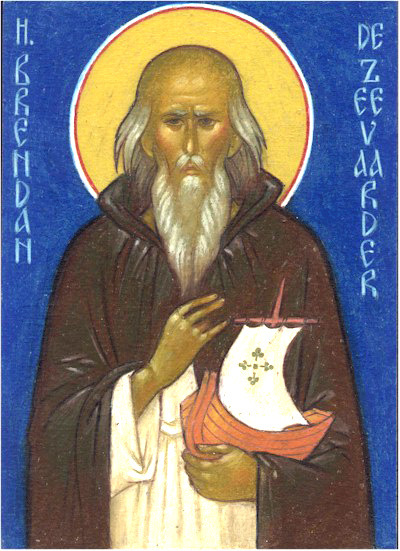
St. Brendan (Brandan, Brandon), called the “Navigator” or also the “Voyager”, is one of the greatest ascetics who lived in Ireland. Unfortunately, his earliest and most reliable hagiographies are lost, and what remains are later twelfth-century Latin and Irish manuscripts, annals, genealogies, traditions, and legends; he is also mentioned in the Lives of some other Irish saints. But, most importantly, he has been loved and venerated by the Irish as one of the nation’s most important Church figures throughout the centuries. According to various traditions, he was born in 484 or 486 and reposed in 575, 577, or 583 at nearly 100. The names of his parents were Finnlug and Cara. The future saint’s birthplace was most probably tiny Fenit Island, situated northwest of the fishing village of Fenit in County Kerry, six miles from the town of Tralee, in the very southwest of Ireland. In the 2000s, a massive statue of St. Brendan was erected on neighboring Great Samphire Island at the entrance to Fenit Harbor to commemorate him.
Fenit, St. Brendan's birthplace, with the harbor and island (taken from Wikipedia)
St. Brendan was baptized as an infant by the holy Bishop Erc of Slane; the night Brendan was born, Bishop Erc saw a great light and a multitude of angels in glowing robes descending from heaven over his parents’ home. Tobar na Molt holy well not far from Tralee and Ardfert, where St. Erc baptized St. Brendan, still exists and is visited by pilgrims seeking physical and mental healing and consolation. There is a chapel near this well with an altar and the figures of three saints (Sts. Brendan, Erc, and Ita). St. Erc may later have ordained St. Brendan as a priest.
Tobar na Molt holy well, in which St. Brendan was baptized, Kerry (photo by Bernard, Geograph.ie)
According to tradition, at the age of two, little Brendan was given by St. Erc to the care of the illustrious holy Abbess Ita († c. 570; feast: January 15) of Killeedy in Limerick, known as “the Foster-mother of the Irish Saints.” Under St. Ita Brendan studied the rudiments of Christianity for five years, and he retained the love and respect for the abbess who nurtured and taught him always. After Killeedy, St. Brendan is believed to have gone to Tuam in Galway, to the famous monastery and school founded by St. Jarlath († c. 540; feast: June 6). Besides, St. Brendan was a disciple of St. Enda of Inishmore (+ c. 530; feast: March 21), one of the earliest monastic founders in Ireland.
Our saint also went to the famous Clonard Monastery in County Meath with the great St. Finnian († 549; feast: December 12), “the Teacher of the Irish Saints”, or one of his successors. Notably, St. Brendan the Navigator (like his saintly namesake, St. Brendan of Birr in Offaly, who reposed in c. 573 and is feasted on November 29) is ranked among “the Twelve Apostles of Ireland,” all of whom were in Clonard. Lastly, tradition says that the young saint traveled to Wales, where he spent some time with St. Gildas (or St. Cadoc) at Llancarfan in Glamorgan, in the monastery famous for its learning. Irish and Welsh monasticism of the age were closely interconnected.
Having been instructed by such celebrated monastic saints, St. Brendan has tonsured a monk, ordained, and then journeyed to the west of his native Ireland to found churches, do extensive missionary work, and shepherd his fellow countrymen. All his biographers wrote that St. Brendan led an austere ascetic life and gained fame as a wonderworker. He excelled in extraordinary zeal for prayer, extreme abstinence, profound humility, and great mercy and love for everyone. In Ireland and Scotland (which he visited many times) St. Brendan established many monasteries. The most famous of them, founded in about 559, was Clonfert, on the west bank of the River Shannon in County Galway. Clonfert, set up by St. Brendan, was renowned all over Ireland. At one time, it is said that it had some 3,000 monks, and future missionaries who later traveled all over Europe to preach the Gospel. One of the most illustrious disciples of Clonfert, who in his youth may have been instructed by St. Brendan, was St. Fursey († c. 648; feast: January 16), who later founded monasteries in Eastern England and France.
Another significant establishment of St. Brendan was the monastery and diocese of Ardfert, which became a large ecclesiastical and monastic center of Kerry close to the saint’s birthplace. Then he established a community at Inis-da-druim, now Coney Island (Innisdadrom) in County Clare. After that he built a monastery at Annaghdown in Galway, by the Bay of Annaghdown near Lough Corrib.
Numerous traditions tell that St. Brendan was also active in the historic Irish province of Leinster, where a host of places are associated with him. Let us mention the parish of Disart in County Kilkenny, Killeney (which still has a church in honor of St. Brendan) and Brandon Hill in Kilkenny. About 1700 feet tall, Brandon Hill, named for St. Brendan, is the highest mountain in County Kilkenny; St. Brendan built a monastic community or church beside it.
Later establishments of St. Brendan worth mentioning are a monastery on the island of Inchiquin, also called Innisquin, in the parish of Killursa in Galway, along with a monastic community on Inishglora off the Mullet Peninsula in County Mayo. For the past 100 years, this island has been uninhabited. Inishglora is noted for its ancient relics related to our saint. Two monastic communities—one for monks and one for nuns—may have existed here simultaneously. Today you can find the ruins of the early St. Brendan’s Church, a “church for men”, and a “church for women” there and drink water from St. Brendan’s holy well, used by local monks in the first millennium! Very ancient cross shafts and other artifacts are situated near the remains of three early beehive cells, one of which belonged to St. Brendan.
Legends associated with Inishglora abound. The historian Gerald of Wales in the late twelfth century testified that as long as monks inhabited this island, human corpses were neither buried nor decayed on it—many bodies were deposited in the open so that people could see their ancestors absolutely uncorrupt for generations (this phenomenon must have ceased when the monks left). The same historian also wrote that vermin, such as mice and rats, never inhabited Inishglora as long as prayer was performed. Though thousands swarmed on other Irish islands, none was found there. Whenever someone brought a rodent to Inishglora, it would instantly run away and leap into the sea or die if it was stopped. Formerly all ships sailing past Inishglora would lower their topsails to pay homage to St. Brendan, whose wonderworking wooden statue stood inside St. Brendan’s Church. Garlic that grows on Inishglora to this day is said to have been planted by monks 1500 years ago!
The more significant part of St. Brendan’s life was spent in travels and voyages (typical for Irish monks and ascetics), which is why he was later nicknamed the “Navigator”. In the eighth and ninth centuries, the famous saga, Navigatio Sancti Brendani (The Voyage of St. Brendan), was composed by an Irish monk, and later other authors wrote more elaborate versions of it. Though famous throughout the Middle Ages, this saga transformed the authentic seafaring ascetic and abbot into a semi-mythical adventurer with supernatural abilities who accomplished unbelievable exploits. According to it, when Brendan was abbot of Clonfert, a monk Barrindus1 once visited him. The monk told him that he had traveled through a thick fog and reached the “heavenly Jerusalem”, full of precious stones, in which the sun never set; there were many mountains, birds sang sweetly, a river flowed from the east to the west, and all the plants were always in bloom. Barrindus had spent a year there...Continue reading orthodoxchristian
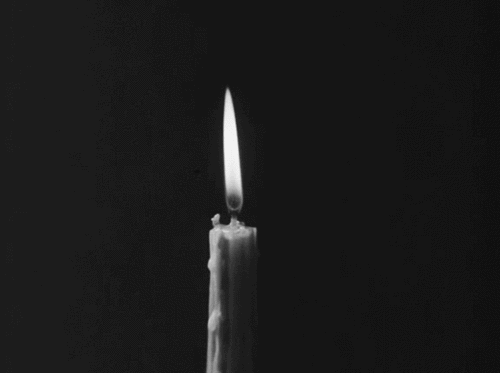
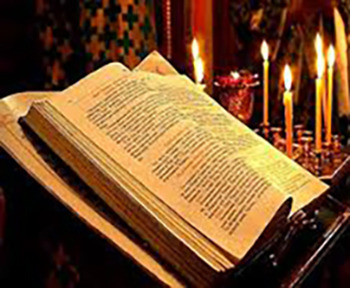
ACTS 21:8-14
8 On the next day we who were Paul's companions departed and came to Caesarea, and entered the house of Philip the evangelist, who was one of the seven, and stayed with him. 9 This man had four virgin daughters who prophesied. 10 And as we stayed many days, a certain prophet named Agabus came down from Judea. 11 When he had come to us, he took Paul's belt, bound his own hands and feet, and said, "Thus says the Holy Spirit, 'So shall the Jews at Jerusalem bind the man who owns this belt, and deliver him into the hands of the Gentiles.' " 12 When we heard these things, we and those from that place pleaded with him not to go up to Jerusalem. 13 Then Paul answered, "What do you mean by weeping and breaking my heart? For I am ready not only to be bound but also to die at Jerusalem for the name of the Lord Jesus." 14 So when he would not be persuaded, we ceased, saying, "The will of the Lord be done."
JOHN 14:27-15:7
27 Peace I leave with you, My peace I give to you; not as the world gives do I give to you. Let not your heart be troubled, neither let it be afraid. 28 You have heard Me say, 'I am going away and coming back to you.' If you loved Me, you would rejoice because I said, 'I am going to the Father,' for My Father is more significant than I. 29 And now I have told you before it comes, that when it does come to pass, you may believe. 30 I will no longer talk much with you, for the ruler of this world is coming, and he has nothing in Me. 31 But that the world may know that I love the Father, and as the Father gave Me commandment, so I do. Arise, let us go from here.
1 I am the true vine, and My Father is the vinedresser. 2 Every branch in Me that does not bear fruit He takes away; and every branch that bears fruit He prunes, that it may bear more fruit. 3 You are already clean because of the word I have spoken to you. 4 Abide in Me, and I in you. As the branch cannot bear fruit of itself unless it abides in the vine, neither can you unless you abide in Me. 5 I am the vine, you are the branches. He who abides in Me bears much fruit, and I in him; without Me, you can do nothing. 6 If anyone does not abide in Me, he is cast out as a branch and is withered; they gather them, throw them into the fire, and are burned. 7 If you abide in Me, and My words abide in you, you will ask what you desire, and it shall be done for you.
#orthodoxy#orthodoxchristianity#easternorthodoxchurch#originofchristianity#spirituality#holyscriptures#gospel#bible#wisdom
2 notes
·
View notes
Photo
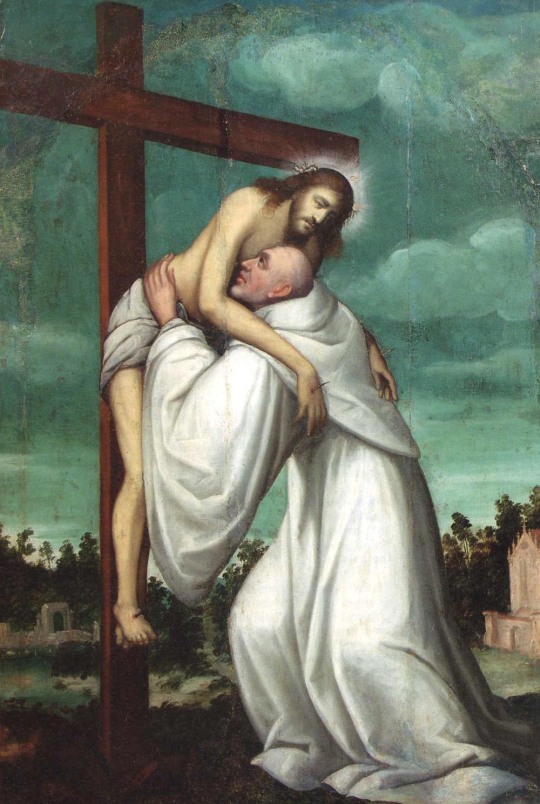
THE DESCRIPTION OF SAINT BERNARD OF CLAIRVAUX
Feast Day: August 20
"God will either give us what we ask, or what He knows to be better for us."
The abbot of Clairvaux, confessor, the Last of the Fathers, the Doctor Mellifluus, and a Doctor of the Church, was born of a noble family at Fontaine-lès-Dijon, Burgundy, Kingdom of France in 1090. Bernard was the third of seven children, and his parents were Tescelin de Fontaine, lord of Fontaine-lès-Dijon, and Alèthe de Montbard, both members of the highest nobility of Burgundy. At the age of 9, he was sent to a school at Châtillon-sur-Seine run by the secular canons of Saint-Vorles, and had an interest in literature and rhetoric. He had a special devotion to the Virgin Mary, and he later wrote several works about the Queen of Heaven. At 19, he lost his mother, and during his youth, he did not escape trying temptations and around this time he thought of living a life of solitude and prayer. At the age of 22, while he was at prayer in a church, he felt the calling of God to enter the Cistercian Monks of Cîteaux.
His testimony was so irresistible that 30 of his friends, brothers and relative followed him into monastic life. Three years later, Bernard was sent with 12 monks to found a new monastery at Clairvaux, a forested place in the Valley of Wormwood. The reputation of his holiness soon attracted 130 new monks, including his own father. During the absence of the Bishop of Langres, Bernard was blessed as abbot by William of Champeaux, Bishop of Châlons-sur-Marne. From then on a strong friendship grew between the abbot and the bishop, who was professor of theology at Notre Dame of Paris and the founder of St. Victor Abbey in Paris.
One day in order to cool down his lustful temptation, he threw himself into ice-cold water. Another time, while sleeping in an inn, a prostitute was introduced naked beside him, and he saved his chastity by running. Many miracles were attributed to his intercession. One time, he restored the power of speech to an old man that he might confess his sins before he died. Another time, an immense number of flies, that infested the Church of Foigny, died instantly after the excommunication he made on them. So great was his reputation that Princes and Popes sought his advice, and even the enemies of the Church admired his holiness of his life and the greatness of his writings. Bernard then passed into Germany, and the reported miracles which multiplied almost at his every step undoubtedly contributed to the success of his mission. Conrad III of Germany and his nephew, the future Holy Roman Emperor, Frederick Barbarossa, received the cross from the hand of Bernard.
In 1128, Bernard participated in the Council of Troyes, which had been convoked by Pope Honorius II, and was presided over by Cardinal Matthew of Albano. The purpose of this council was to settle certain disputes of the bishops of Paris, and regulate other matters of the Church of France. The bishops made Bernard secretary of the council, and charged him with drawing up the synodal statutes. After the council, the bishop of Verdun was deposed. It was at this council that Bernard composed a rule for the Knights Templar; it soon became an ideal of Christian nobility. Around this time, he praised them in his 'Liber ad milites templi de laude novae militiae (Book to the Knights of the Temple, in praise of the new knighthood)'.
In 1144, Bernard was commissioned by Pope Eugene III to preach the Second Crusade. Moved by his burning words, many Christians embarked for the Holy Land, but the Crusade ended in total miserable failure. That proved that even saints sometimes can commit mistakes. He died on August 20, 1153 at the age of 62 or 63, in Clairvaux Abbey in the province of Champagne (modern day part of Ville-sous-la-Ferté).
Canonized a saint by Pope Alexander III on January 18, 1174 and declared a Doctor of the Church by Pope Pius VIII in 1830, his major shrine can be found at the famed Troyes Cathedral (Cathédrale Saint-Pierre-et-Saint-Paul), where his 12th century reliquary is held. Bernard is the patron saint of candlemakers, beekeepers, and the Poor Fellow-Soldiers of Christ and of the Temple of Solomon aka the Knights Templar.
11 notes
·
View notes
Text
SAINT OF THE DAY (April 17)
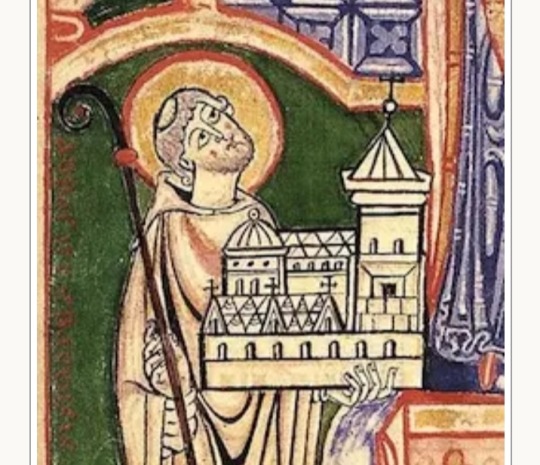
St. Stephen Harding
St. Stephen Harding is regarded as the founder of the Cistercian monasteries.
He was born around 1060 in Dorset, England. He was educated at Sherborne Abbey.
After studying in Paris and Rome, he visited the monastery of Molesme. Impressed by its holy abbot, Robert of Molesme, and the prior, Alberic (both of which were later canonized), Stephen joined the community.
After a few years, the three men, along with 20 other monks, established a more austere monastery in Citeaux.
Eventually, Robert was called back to his position of abbot at Molesme in 1099. Alberic, who became the new abbot of Citeaux, died in 1110. Following Alberic's death, Stephen was elected as abbot.
However, very few men were joining the community, and the monastery was suffering from hunger and sickness.
His early years at Citeaux were difficult, but when St. Bernard and his followers joined the community in 1112, a good order was established. He went on to set up many more Cistercian houses.
By 1119, St. Stephen had written the Charter of Charity - a very important document, which was to define Western monasticism for many years to come.
The very next year, Stephen founded his first colony at La Ferté.
The high ideals, careful organisation, austerity, and simplicity of the Cistercian life owe much to the character of Stephen Harding.
During his 25 years as abbot, it is said that he led Citeaux from a struggling 'lodge in the wilderness to the headship of a great religious order.'
Before his death in 1134, Stephen had established 13 monasteries. By the end of the 12th century, there were 500 in Europe.
His fellow Englishman, William of Malmsbury, wrote that he was "approachable, good-looking, always cheerful in the Lord."
10 notes
·
View notes
Photo




The Coronation of the Virgin Mary is the subject of the sculpted west portal of Senlis Cathedral. The Department of Art History and Archeology at Columbia University has a great website called Mapping Gothic France that provides the following description:
The single sculpted portal at Senlis marks experimentation with a new style and subject-matter in the late 1160s in the Ile-de-France region. The portal centers around the Coronation of the Virgin. The lintel depicts a scene of the Dormition of the Virgin on the left and the Assumption of the Virgin on the right, separated by a slender colonnette. The tympanum above shows The Virgin Mary and Christ enthroned side by side under a swooping canopy. They are flanked by angels with tapers and censers. The first three bands of voussoirs show the Tree of Jesse, while the outer band shows Old Testament patriarchs and prophets. The jamb figures were much remodeled in the 19th century, and show on the left, from exterior to interior, John the Baptist, Samuel or Aaron, Moses, and Abraham. The right side, from interior to exterior, shows Simeon, Jeremiah, Jacob, and David. The trumeau is now lost, but would have shown Saint Rieul, the first bishop of Senlis. . . .
The Coronation of the Virgin, a theme taken from the Song of Songs and popularized by late twelfth-century figures such as Abbot Suger, Bernard of Clairvaux, and St. Anselm, moved away from previous terrifying scenes of eschatological destruction towards an emphasis on the human, approachable, forgiving aspect of the Church through the figure of the Virgin. Seen as the Bride of Christ, his queen in Heaven, she acts as the bond between the Church and Christ's suffering. She is seen as a maternal, nurturing figure who, through her intimate relationship with Christ, could intercede on behalf of the worshipper. The portal at Senlis is the earliest instance of this shift in rhetorical imagery, attempting to recast the Church in a forgiving, approachable light. From the workshops at Senlis, this type of program spread throughout the Ile-de-France and beyond.
Photos by Charles Reeza
#Gothic art#Gothic architecture#Catholic church#forgiving and approachable#Senlis#France#places to see#travel photos
14 notes
·
View notes